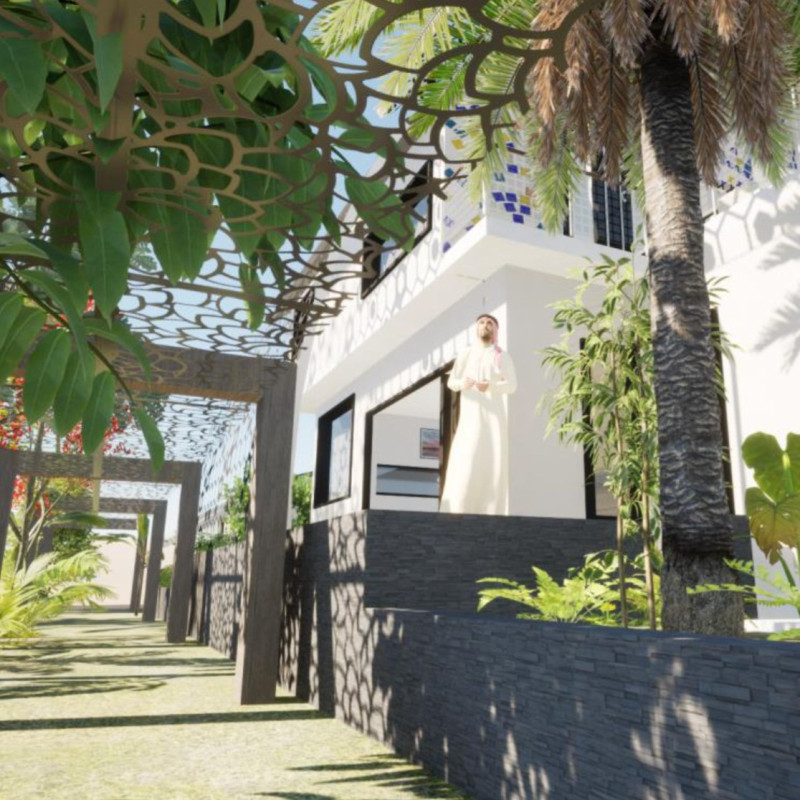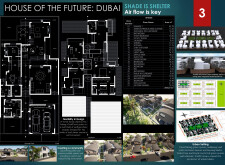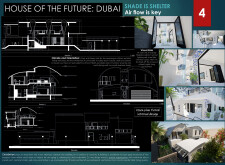5 key facts about this project
## Project Overview
The House of the Future, located in Dubai, presents an architecture that focuses on sustainability and innovation while engaging with the local community. This design responds effectively to the region's hot, arid climate by emphasizing the use of local materials, passive cooling strategies, and advanced building technologies. The spatial organization maximizes airflow and natural light, enhancing the inhabitants' quality of life within the unique environmental context.
## Spatial Strategy and Environmental Response
### Adaptive Layout
The design fosters a strong connection between indoor and outdoor spaces, facilitating seamless interactions among various living areas. This approach incorporates passive cooling principles, utilizing strategically placed shading devices and natural ventilation to reduce dependence on mechanical cooling systems. The integration of landscaping not only supports biodiversity but also enhances the microclimate, contributing to the overall environmental responsiveness of the project.
### Unique Shading Features
A notable aspect of the architectural design is its layered shading techniques, which address the significant temperature fluctuations characteristic of Dubai's climate. These shading elements provide physical comfort by mitigating heat while also introducing artistic patterns inspired by natural forms, reinforcing the project's visual coherence.
## Material Selection and Technological Integration
### Sustainable Material Choices
The project incorporates locally sourced brick and concrete, supporting regional industries and minimizing transportation emissions. Hollow structural steel provides strength and flexibility for the design, while recycled plastic is utilized in the shading systems, demonstrating a commitment to responsible material sourcing. Extensive use of glass in façades optimizes natural light and fosters visual connections to the outdoor environment.
### Innovative Technological Systems
Incorporating advanced technologies, the design features renewable energy solutions such as solar panels to diminish reliance on fossil fuels and promote energy efficiency. Water conservation is prioritized through greywater recycling systems, while smart home technologies enhance energy monitoring and management, all contributing to a more sustainable living experience.
## Flexibility and User-Focused Design
### Modular and Adaptable Spaces
The layout is characterized by a modular design that allows for adaptable configurations, catering to diverse occupant needs over time. Interchangeable spaces serve multiple purposes, enabling gatherings, serene retreats, or green areas, thus enhancing community interactions and overall user engagement.
### Environmental Strategies
Cross-ventilation strategies are essential in the design, taking advantage of prevailing winds to maintain cool air circulation and minimize heat accumulation. Thoughtful landscape design reinforces this strategy, as extensive greenery not only enhances the aesthetic quality but also contributes to cooling and biodiversity. Building orientation is optimized to harness solar gain during cooler months while minimizing exposure during peak heat periods.






















































